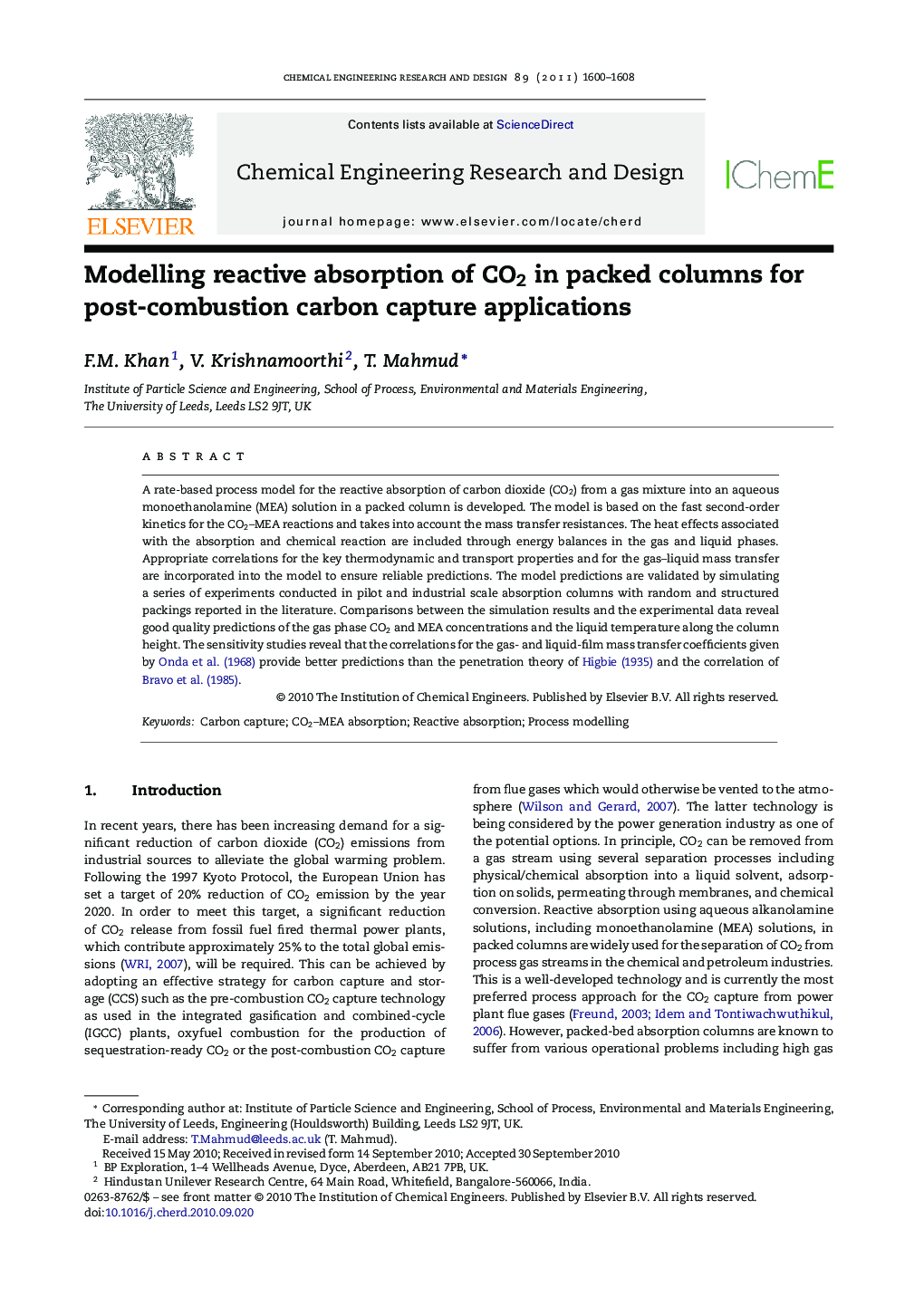| کد مقاله | کد نشریه | سال انتشار | مقاله انگلیسی | نسخه تمام متن |
|---|---|---|---|---|
| 622043 | 882598 | 2011 | 9 صفحه PDF | دانلود رایگان |

A rate-based process model for the reactive absorption of carbon dioxide (CO2) from a gas mixture into an aqueous monoethanolamine (MEA) solution in a packed column is developed. The model is based on the fast second-order kinetics for the CO2–MEA reactions and takes into account the mass transfer resistances. The heat effects associated with the absorption and chemical reaction are included through energy balances in the gas and liquid phases. Appropriate correlations for the key thermodynamic and transport properties and for the gas–liquid mass transfer are incorporated into the model to ensure reliable predictions. The model predictions are validated by simulating a series of experiments conducted in pilot and industrial scale absorption columns with random and structured packings reported in the literature. Comparisons between the simulation results and the experimental data reveal good quality predictions of the gas phase CO2 and MEA concentrations and the liquid temperature along the column height. The sensitivity studies reveal that the correlations for the gas- and liquid-film mass transfer coefficients given by Onda et al. (1968) provide better predictions than the penetration theory of Higbie (1935) and the correlation of Bravo et al. (1985).
Figure optionsDownload high-quality image (141 K)Download as PowerPoint slideResearch highlights▶ Rate-based process modelling for post-combustion CO2 capture in packed-bed absorbers. ▶ Solution of model using Microsoft Excel facilitates its use for process design and simulation. ▶ Accurate predictions for pilot and industrial scale CO2 absorbers for a range of operating conditions. ▶ Mass transfer correlations of Onda et al. (1968) provide better predictions.
Journal: Chemical Engineering Research and Design - Volume 89, Issue 9, September 2011, Pages 1600–1608